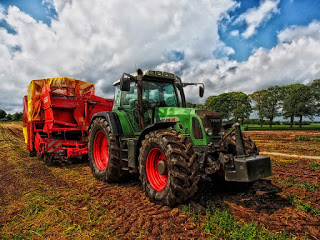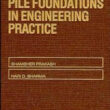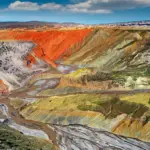We know that soil clay or sand is capable of withstanding heavy loads but is subjected to settlement, consolidation and deformation, which if not controlled, result in shear failure or an ultimate collapse of the structure.
Actually it is a known fact that while mixing different construction material would also combine their positives. So Soil Cement is one of that positive combining the positives of soil and cement.
Cement we know is expensive and a costly construction material on the other hand soil is available everywhere; though not of standard quality sometimes but generally a good and healthy soil is available in abundance. So we can make soil like a cement i.e. hard-like rock and impervious as well just by mixing the soil and the cement.
Thus from here we can derive the definition of soil cement :-
Soil cement is a highly dense and tightly compacted, hard or semi-rigid, durable and low cost mixture of pulverized natural soil, cement and water that hardens as a result of hydration reaction of cement and water.
It is a low cost paving material when used as a base in the pavements for protection of subgrade, or used as a facing material for earth fill dams where suitable riprap is not available, or used as a bedding of drainage concrete heavy pipes, or is also used as slope protection.
Soil cement is different from general ordinary Portland cement paste in the sense, that soil-cement has a lower cement content and it does not form cement past within its matrix but it forms a matrix that has nodules of uncemented material.
Use of Soil Cement in Pavement and Highways
It is a known fact the service life and the quality of the pavement depends primarily on the behavior and performance of the foundation soil. Soil cement due to its characteristics of easy construction, low cost, low maintenance is now widely used as a base or subbase material.
to know more about usage of soil-cement in highways and pavement click the button below :-
Now let us briefly discuss about the ingredients of the soil cement.
Like Us on Facebook!
Ingredients of Soil-Cement
The ingredients required for soil cement, as already mentioned before, are cement, soil and water.
Each ingredients must have some suitable properties other wise alternatives can be used in order to avoid any problem in future.
Subscribe Us on YouTube!
To know more about the Ingredients of the Soil Cement Click the Button below :-
Properties of Soil-Cement
Like we know that the properties of ordinary concrete depends on the amount and type of constituents used in the process of manufacturing, same goes with soil-cement. The major variables that control the properties and characteristics of soil cement mixtures are the type of soil or aggregate material used, the proportion of cement in the mix, the moisture condition and the degree of compaction.
The enormous amount of variables involved for determination of the properties of soil-cement and the unpredictable behavior of ingredients makes it difficult to predict the properties and characteristics of how the soil-cement will perform in the long run.
How over this unpredictable behavior can be minimized by knowing some properties prior to the usage of raw materials in the mix. Standard Laboratory tests are necessary to verity the acceptability of the soil and to determine proper cement content, optimum moisture content and maximum dry unit weight of the soil-cement. After the soil has been classified by sieve analyses and other tests, the required cement content may be estimated.
Testing ensures that the mixture will have strength and long-term durability is there. No guesswork is involved.
Construction Procedure of Soil Cement
Now let us talk about the construction procedure :- Briefly, it consists of shaping the road bed, spreading the cement, mixing the cement and soil, adding water and blending it in, compacting and curing.
Now let me briefly explain the every step involved :-
Spreading the Material
First comes the cement spreading operation. The cement may be reached at site in bags or in bulker trucks which ever the case is. The cement should be spread uniformly, the bags are laid out in a pre-determined pattern depending on the required cement content. The ideal method for spreading bulk cement is using specially constructed cement spreader, but if not available than it can be spreaded manually.
Mixing the Material
Now comes the mixing process, whether it is central plant mixing process or mixed-in-place process thorough mixing is needed always. Central mixing plants can be used where borrow material is involved. Friable granular materials are selected for their low cement requirements and ease of handling and mixing. The mixed soil-cement is than taken to the jobsite and spread on the prepared subgrade.
Compaction
The next step is the compaction of the roadway. The soil-cement mixture must be compacted at least 95 % of Standard Proctor Density. This can be achieved by using any suitable compaction rollers like steel drum roller, pneumatic tyre roller or sheep-foot roller. After compaction is completed, any minor grading that is needed is done, and the soil – cement is ready for curing. The cure coat should be applied as soon as practical, since the road must be kept wet until it is applied. The usual practice is to apply the cure coat after completing two or three days’ work.
Applying Water and Curing
The next step in the construction via soil-cement is application of water or curing compound as per the requirement of the project. As with concrete, the soil-cement hardening process is a chemical reaction between the cement and water called hydration reaction. In order for the soil-cement to gain strength, water must be available for this reaction. Any curing material that will seal in the water will work.
Types of Soil Cement
Depending on the amount and type of constituents used in soil cements; it is available in many forms and types in local areas. Some of them are as follows :-
1. Cement Modified Soil (CMS)
2. Full-Depth Reclamation (FDR)
3. Soil-Cement Base (SCB)
4. Cement-Treated base (CTB)
To know more about different types of Soil Cement Go to this link button below :-


















